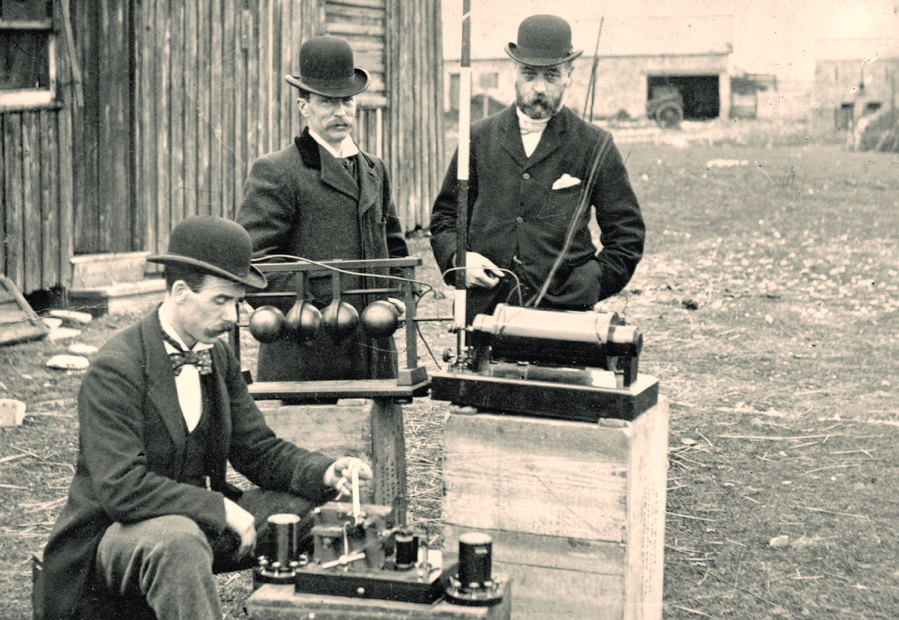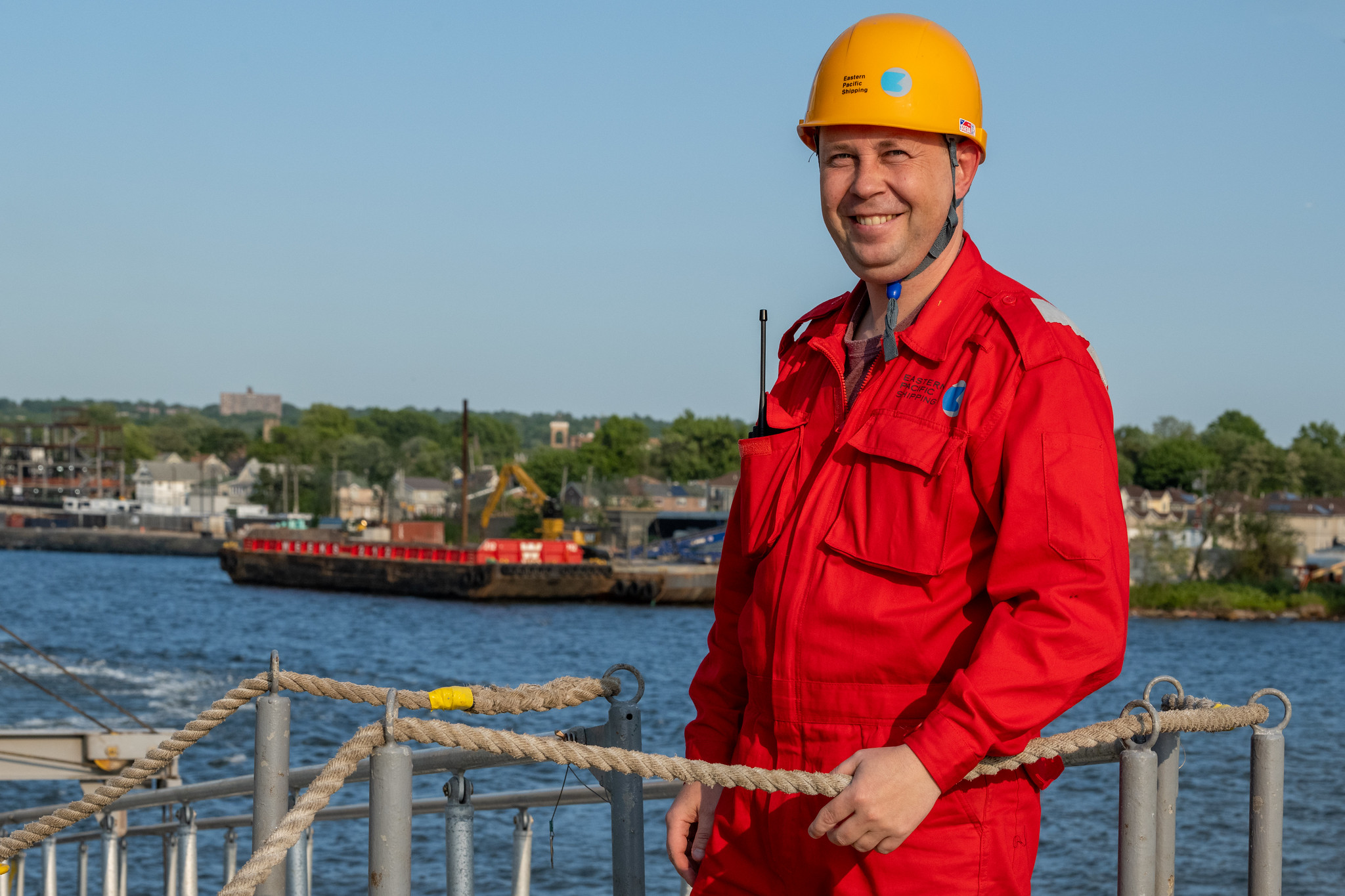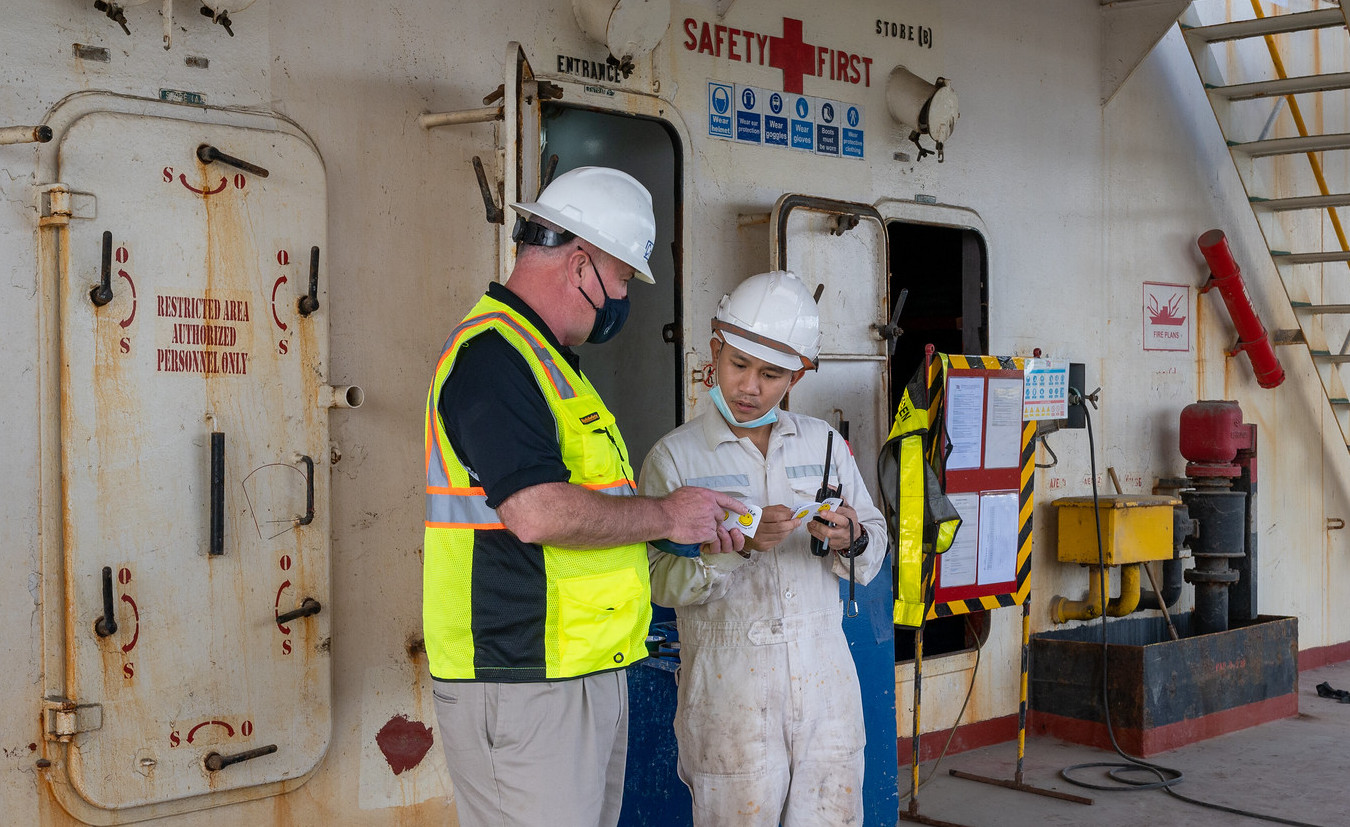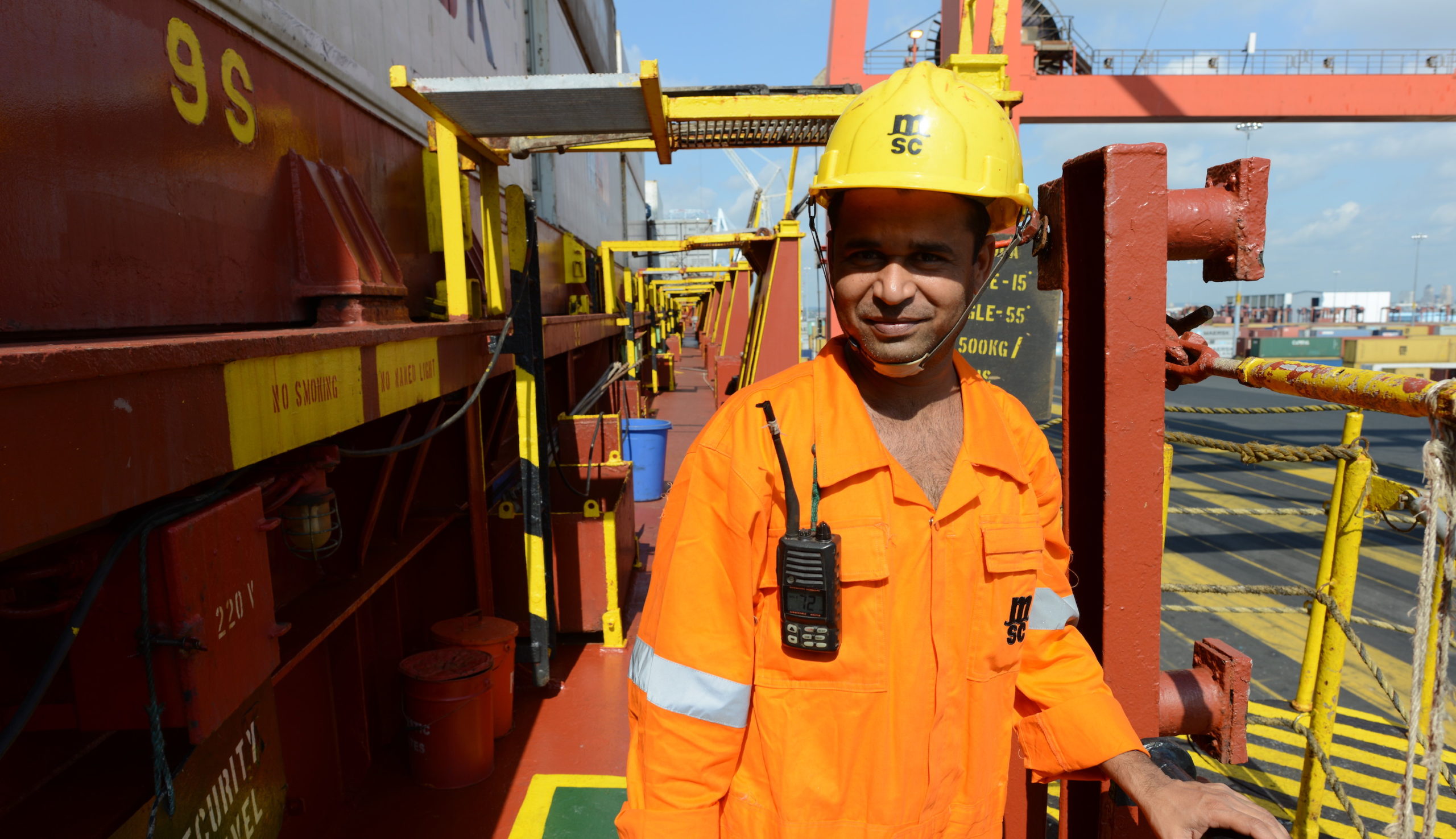Photo: British Post Office engineers inspect Marconi’s radio equipment during a demonstration on Flat Holm Island – near the port of Bristol, England, 13 May 1897. [British Post Office licensed under CC BY 3.0]
By Rev. David Reid MA AFNI
In 1836, the American artist Samuel Morse created the original Morse code that would make possible the transmission of coded messages over the telegraph system. The telegraph system became the world’s first long-distance communication system. In 1844, the first telegraph message was sent from Washington, D.C. to Baltimore, Maryland. By 1866 a cable laid on the seabed of the Atlantic Ocean made the first trans-Atlantic messages possible. These events occurred after the opening of the first seafarer missions on both sides of the Atlantic. In 1819, George Charles ‘Boatswain’ Smith opened a floating chapel for seafarers on the Thames in 1819. The Rev. John Ashley began the Bristol Channel Mission in 1839, creating the first model for ship visiting, that organization would later become the Mission to Seafarers operating around the world. In Philadelphia, the Seamen’s Church Institute opened the doors of its floating chapel to serve the needs of seafarers in 1843.
Today, those of us in maritime ministry are focused on the welfare of the 21st-century seafarer, striving to make a connection with all seafarers that we meet during our ship visits. Imagine the early days of the seafarer mission when the only communication system available was the postal service. Fast ocean liners transported all of the ship’s mail along with all international mail. This is the reason for the R.M.S prefix; R.M.S. Queen Mary referenced that she was a Royal Mail Ship. Airmail would not arrive until the 20th century. In the era before satellites and the Internet, seafarers depended upon the post to keep in touch. Before the Internet, posted letters were the main link between seafarers and their families. International phone calls from landlines were costly and rarely used except in cases of emergency.
For a long period of maritime history, ships left port and remained out of contact until they reached their destination. In the late 19th century Lloyds had established signal stations at Gibraltar and Singapore or any point of land where ships routinely passed close to shore. As ships passed the Lloyds signal stations, they would communicate by semaphore flags and flashing lamp. Lloyds could then report the passage of ships to the owners, insurers, and charterers. Reports from Lloyds signal stations represented the best that was available in 1880. Radio communication was still over the horizon.
Wireless or radio communication would only arrive in the early 20th century thanks to the pioneering work of Nicolas Tesla and Guglielmo Marconi, an Italian inventor residing in Great Britain. Tesla had presented his forward-thinking ideas of wireless communication in 1892 and 1893. Marconi carried forward Tesla’s concept believing that there was a future for wireless communication. Marconi believed in this as a competitive alternative to telegraphy, which depended on wires to transmit and receive coded messages. One hundred years later, we now live in a world that Tesla and Marconi dreamed about, a world where wireless devices are increasingly interconnected.
Marconi focused his attention on the development of wireless telegraphy for the maritime world, realizing that if he could demonstrate a viable system, there would be no competition. On November 15, 1899, the first onboard wireless telegraphy communication took place from the American passenger liner, St Paul. The St Paul successfully sent a Morse-code message to an English radio receiver some 66 miles away from the British coastline. The world of maritime communication would change forever. Shipowners rapidly adapted the installation of Marconi’s equipment onboard their ships. However, Marconi would only lease this new equipment, and the Radio officers were known as Marconi men because they were supplied as part of a contract with the Marconi company.
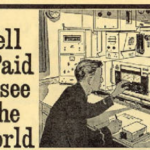
“Well Paid to see the World” the Marconi campaign to hire ship’s Radio Officers
The loss of the R.M.S. Titanic on April 15, 1912 proved the value of the Marconi men. The Titanic was fitted with the Marconi radio system, and the two young Marconi men, Harold Bride and Jack Philipps served as the Radio officers on the Titanic. They sent out the S.O.S. message by Morse code that enabled the passenger ship Carpathia to come to the rescue, saving many lives. The S.O.S. message consists of three dots, three dashes followed by three dots. In Morse code, the letter “S” is represented by three dots and the letter “O” by three dashes. Contrary to popular folklore, S.O.S. does not stand for “Save Our Souls” or any other meaning; it was chosen for its simplicity and clarity. It is also straightforward for a novice operator to send on a Morse key. Following the Titanic inquiry, legislation was introduced on both sides of the Atlantic to make the provision of wireless telegraphy a mandatory safety provision under the Safety of Life at Sea Convention, known as SOLAS.
From the time of the Titanic in 1912 until the late 1970s with the launch of global satellites the role of the ship’s radio station remained unchanged. The hardware improved in quality and reliability, but the fundamental system of sending and receiving messages in Morse code remained the same. Radio officers on merchant ships were part of the ship’s company and were nicknamed “Sparks,” because of the spark-gap transmitters that were initially used to create the signal. Sparks had his radio room just behind the wheelhouse always close to the team navigating the ship.
Merchant ships only carried a single Radio officer, while passenger and military vessels maintained 24-hour coverage with a three-watch system. The sending and receiving of a message involved a complex series of steps for the Sparks and something very different from the instant communication that is now possible in the interconnected world of satellites and the Internet. When the shipowner had a message for one of their ships, the message would be sent as a telegram to one of the powerful land-based radio stations around the world. For British ships this was Portishead Radio, callsign “GKA.” Every ship was assigned a unique call sign, British ships carried a unique four-letter callsign that began with the letter G. Portishead Radio would transmit traffic lists at designated times through the day, the list would have the call sign of any ship for which they held a message. The ship’s radio officer would tune his receiver to Portishead and listen to hear if his ship was on the Portishead traffic list. The traffic list was step one. Once this was known, the second step was to open communication with Portishead radio by Morse code. This step was to advise Portishead that his ship, was ready to receive the message. [as an example we will assign the ship the call sign GABC.] Portishead would then initiate the third step to advise the ship’s radio officer that GABC was #22 on the list. The Radio officer would then have to wait until his turn to receive the message. Sometimes the business of getting to the third step could take hours, often frustrated by periods when signal strength faded due to atmospheric interference. Step four was the actual message, Sparks would transcribe the Morse code to words and would type up the incoming message; this would then be handed to the Captain.
In my own seagoing experience, I witnessed times when we were steaming along waiting for orders, perhaps awaiting the name of the discharge port, or instructions about the next voyage. Often, we navigated hundreds of miles in the wrong direction simply because we had not received the message. Once a message had been received, the business of making a reply was the reverse of the steps, requiring Sparks to initiate a call to Portishead and to find a time slot to transmit.
The working day for Radio officers was different from any other person on board; they typically worked two hours on and two hours off over a 16-hour day. They would adjust their hours to reflect traffic lists and atmospherics. Being a Radio officer was a lonely world spent with headphones listening to a constant stream of dots and dashes. Radio officers also knew of every communication to and from the ship. This meant that they always knew as much as the Captain. They had to respect the confidentiality of all communications. If a message came for a crew member announcing the birth of a child back home, Sparks was the first to know. This confidential relationship between the Captain and the Radio officer extended to the arrival of the ship’s mail. When the agent delivered the large envelope containing everyone’s letters from home, the Captain would hand the envelope to the Radio officer to sort out the official mail from the crew mail. Then the Radio officer would act as the ship’s postman and would bring the mail to the mess room and call out the names of those who had received letters. Sparks was the centric person of communication.
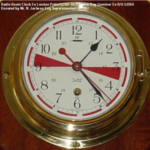
Radio room clocks were different from other ship’s clocks. They had two three-minute time zones shaded in red, from 15-18 minutes and 45-48 minutes in each hour. During these three-minute periods, all radio operators ceased transmitting and switched to the 500kHz distress frequency and listened for any distress calls.
Routine tasks such as receiving weather forecasts also relied on messages via Morse code. However, these came in a stream of alphanumeric code that the navigating officer would need to decipher and then plot on to the chart. Once plotted, the isobars would be displayed, providing a view of where the low-pressure storms were located. All of these tasks required patience and many man-hours to create something that today is digitally transmitted with real-time satellite weather data.
In 1979, I.M.O. introduced the Global Maritime Distress and Safety System known simply as GMDSS. The new technology brought an end to the need for a Radio officer onboard a merchant ship. For eighty-years, the wireless telegraphy system pioneered by Marconi using Samuel Morse’s code came to an end and with it the job of Sparks, the Radio officer. Satellite communications and onboard computers, the creation of INMARSAT to serve the satellite communication needs of shipping led to the loss of an entire department on a merchant ship. Today, the sending and receiving of messages take place instantly making the world of shipping safer and more productive.
As those in maritime connect with seafarers, they provide the human connection that Cal Newport, the author of Digital Minimalism, calls “Conversation Centric Communication.” Newport points out that no online experience can compare to the value of actual personal contact as in sharing a cup of coffee or a brief one on one talk. This is the reason why seafarer chaplaincy remains relevant in the 21st century; the work of ship visiting represents Newport’s “Conversation Centric Communication.” In the diminished crew size of today’s merchant ship, there are fewer opportunities for social interaction on board. The daily routine becomes one of standing watches, resting, and meals. Time in Port is kept to a minimum; fast turnarounds mean efficiency and a better return for the ship operator. For the seafarer, the time in Port represents increased work with extended watchkeeping, regulatory inspections such as Port State Control, and routine chores of taking stores onboard. In many cases, the time available to catch a few hours ashore is squeezed to almost zero. This is further exacerbated when port security and transport challenges place tough hurdles in front of our seafarers. Our ability to create a presence on board to visit and listen to them is our way to create the conversation opportunity, this is reminiscent of the pioneering days of the Bristol Channel Mission in 1839.
When we bring with us a portable WiFi Hotspot, we are bringing the magic of wireless communication that was inspired by the creative imagination of Nicolas Tesla and Guglielmo Marconi. Samuel Morse’s code has been made redundant by the use of the QWERTY keypad to tap out the email or text message. The keying of letters to form words and for those keystrokes to be wirelessly transmitted at the speed of light around the world has placed the tools of communication in the hands of many.
The next time that you find yourself disconnected from the Internet due to an outage or because of a remote location, remember the seafarer who experiences more time disconnected than anyone – the time they have when they are connected is therefore precious.
+++

